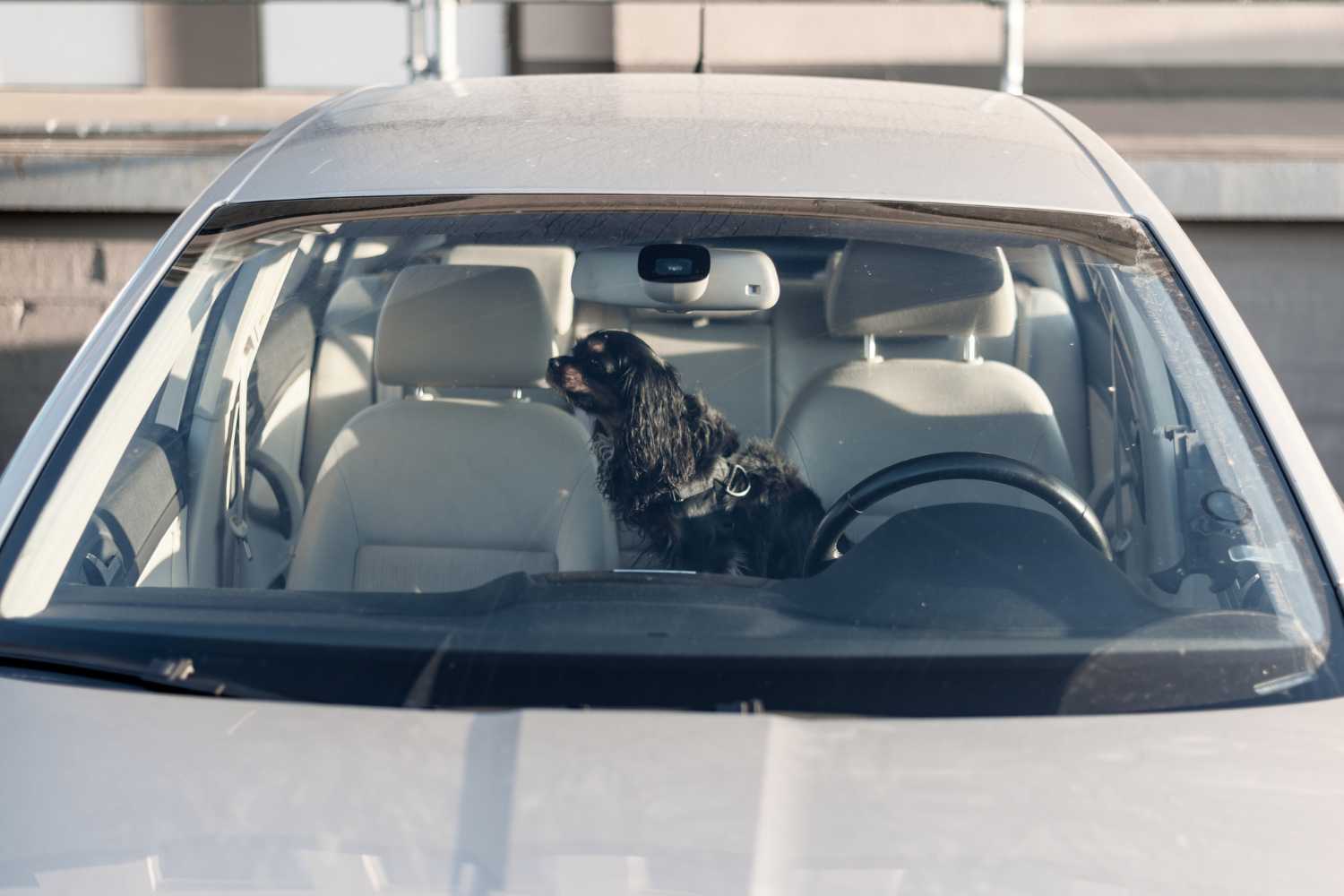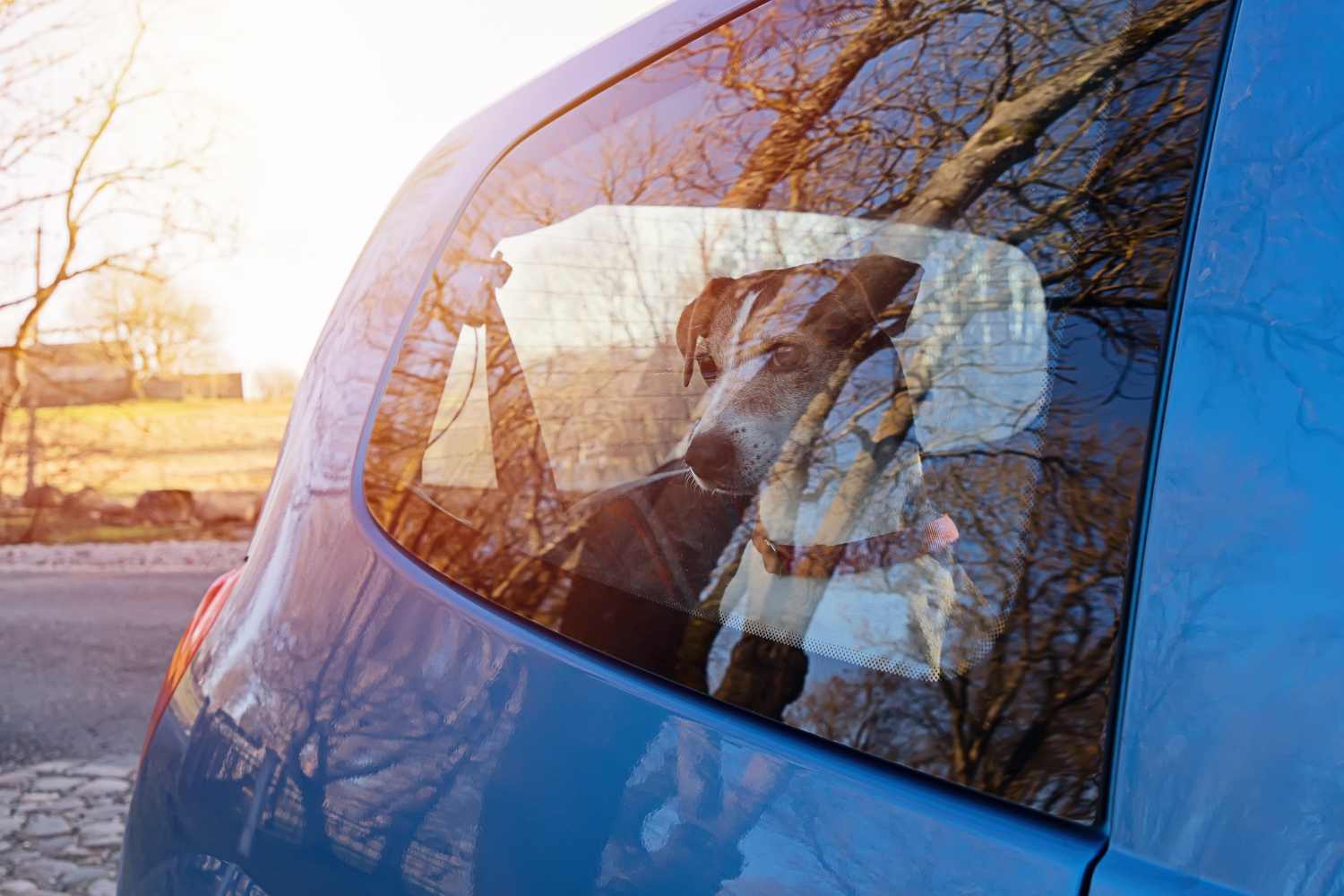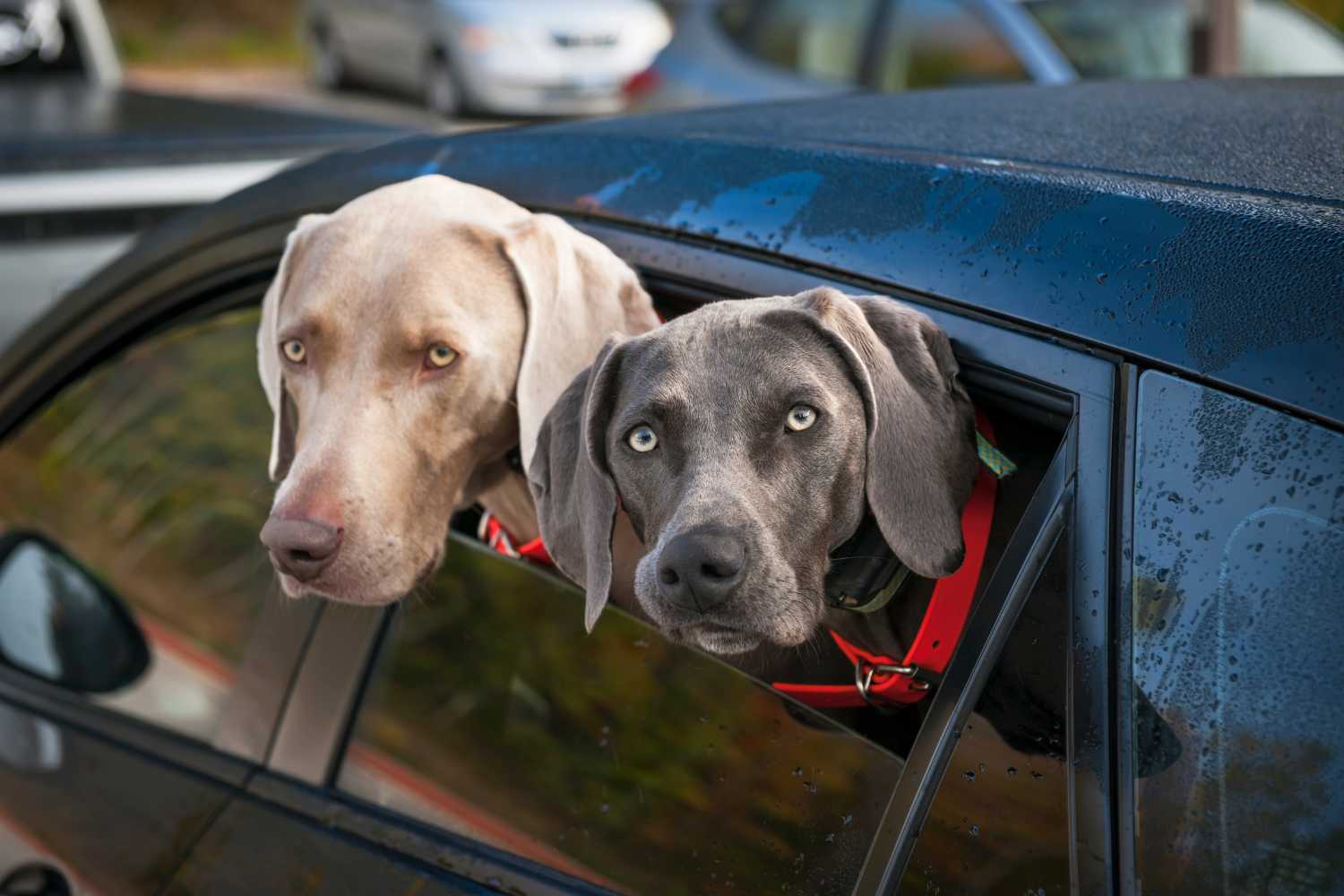Leaving a dog in a hot car, even for a few minutes, can be fatal. Here's why it happens so quickly—and how U.S. laws punish those responsible and protect those who intervene.

Table of contents
For many people, a quick errand—grabbing a coffee, running into the pharmacy, picking up groceries—feels like it’ll only take a few minutes. You park, kill the engine, shut the door, and think, “The dog can wait, it’s just five minutes.”
Outside, the sky is clear and the sun feels pleasant. But what feels like a harmless wait to you could be a death sentence for your dog, especially in the summer.
How fast does a parked car heat up?
Cars left in the sun heat up with terrifying speed. If it’s 75°F (24°C) outside, the cabin can hit 93°F (34°C) in under ten minutes. In fifteen, it can soar past 104°F (40°C). And your dog? He can’t open the door. He can’t roll down the window. He’s stuck—trapped in a metal box turning into an oven.
Why dogs suffer heatstroke inside car

Dogs don’t regulate body temperature the way humans do. They mainly rely on panting and sweating through their paw pads. But once the heat inside a vehicle rises, this isn’t enough. In just a few minutes, a dog’s body temperature can rise above 106°F (41°C). At that point, it enters a state of heat stress. It pants frantically, becomes dehydrated, starts to wobble, and may even collapse.
Heatstroke isn’t just uncomfortable—it’s a medical emergency. Organs begin to shut down, the brain suffers damage, and death can occur within minutes. A desperate rush to the vet might be too late by the time you realize something’s wrong.
Cracking a window isn’t enough

Many pet owners believe that leaving the window slightly open allows air to circulate. It doesn’t. That’s a dangerous myth. The hot air that enters the cabin just contributes to the rising temperature. The greenhouse effect inside a car is merciless—it traps heat and turns the space into an unbearable sauna.
Some dogs are even more vulnerable. Flat-faced breeds like bulldogs and pugs, with their shorter airways, suffer faster. Puppies, seniors, and dogs with heart conditions are also at greater risk. And what’s scarier is that signs of distress may come too late, when nothing can be done.
Why heatstroke is often fatal
This isn’t about your dog being strong or “used to it.” It’s about biology. When a dog’s body overheats, organs fail. The kidneys shut down, the heart struggles, the brain loses oxygen. And once internal temperature passes a certain threshold, there’s no coming back.
Leaving a dog in a hot car is not just dangerous—it’s illegal. In the United States, many states classify it as animal cruelty, punishable by law. As we’ll see later, laws are in place not only to prosecute the owner, but also to protect good samaritans who intervene.
How to keep your dog safe in hot weather
There’s really only one safe rule: never leave your dog alone in a parked car.
If you’re heading into a store, leave your dog at home, in a cool room with fresh water. If your dog needs to be with you, take them with you inside wherever you’re going—or bring someone who can stay in the shade and watch them. Prioritize hydration and rest, always.
Legal consequences in the United States

In the U.S., over 30 states have laws that address animals left in vehicles, and many of them allow law enforcement—or even civilians—to take action.
Some states, like California, Florida, and Arizona, explicitly allow people to break into a car to save an animal in distress—as long as they contact authorities first and follow legal procedures. Others, like Tennessee and Ohio, extend this right to any “good faith” bystander.
At the same time, animal cruelty charges may be filed against the pet owner. Depending on the state, this can lead to fines, criminal charges, and in repeat or severe cases, even jail time.
As one animal control officer put it: “If it’s too hot for you, it’s too hot for them. A dog can’t understand why no one’s coming back.”
